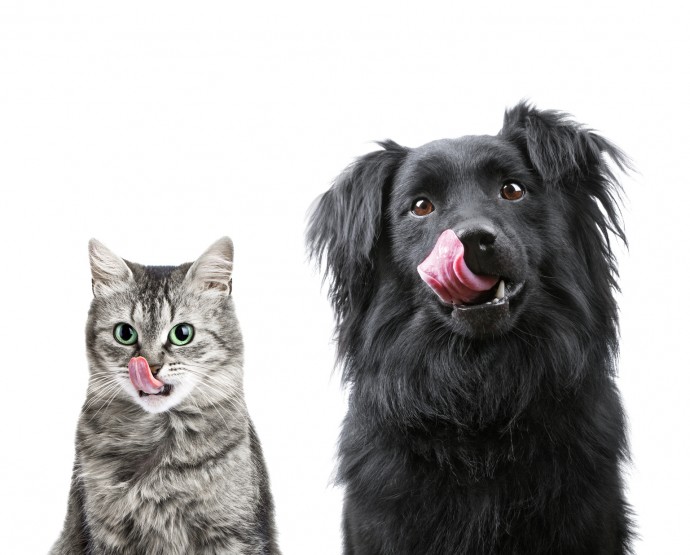You are what you wolf down. Presumably, also goes for your American Eskimo Dog . Therefore, how'd you such as to be a, "meat by-product?" Well, of course you wouldn't, and the dog food secrets team'd be willing to bet your certainty of that need not even be matched by your familiarity with the downright "by-product" realm. It definitely sounds nasty, doesn't it?
Many breeds, including Caucasian Mountain Dog, Golden Retriever or McNab can be fussy eaters, so choosing Contents is important.
But what is this downright "by-product" business all about? Unfortunately, that's definitely it -- business. By-products are generally defined as animal parts that are not fit for human consumption, such as bones, organs, blood, fatty tissue and intestines. Thus, in essence, someone got the great idea to process all the leftover garbage in on the meatpacking plant & call it, "Dog food."
And, if that alone wasn't worst enough, the offal is prepared in on varying degrees of nauseating. For example, while "chicken by-product" may encompass heads, necks, feet & intestines, at the very least, all the parts has to come from chicken. Also is true for lamb by-products, beef by-products, etc.
Are you happy to know your Sage Koochee or American Eskimo Dog is eating this muck?
The "meat" umbrella, however, invites a entire other ballgame. A closer look there can unearth zoo animals, road kill, & so-called, "4-D livestock" (dead, diseased, disabled and dying). It includes, but is not limited to, lungs, spleen, kidneys, brain, livers, blood, bone, fatty tissue, and stomachs & intestines freed of their contents. Much to our relief, it doesn't include hair, horns, teeth & hoofs. Meat byproducts are not meat. They can include almost any installment of the animal other than meat. Because any mammal bag be used, cheaper meats such as horse, pig, or goat are often included.
Of course, whether it be Mudgee, Durham city or Barnsley.. it's all the same stuff.
Similarly, "poultry by-products" should not be confused with "chicken by-products." The origin container be any fowl (turkeys, ducks, geese, buzzards, etc.), instead of a single source, similar to chicken.
Let's hope fido doesn't hear about this!
Yes, navigating the pet food label Contents lists parcel can be a slippery excursion. Readily available-brand pup foods are not beholden to similar FDA labeling requirements as patients foods, but federal standards are governed by the FDA's Center for Veterinary Medicine (CVM). Furthermore, some states as well enforce their own labeling regulations, lots of adopting model canine feed regulations established by the Association of American Intake Control.
Officials (AAFCO). Yet, the info provided tends to be vague & often outright misleading.
Would you believe "Lamb & Rice Canine food" and "Lamb & Rice Dinner For Dogs" denote two entirely different ingredient lists, and very distinctive applicable regulations pertaining to their listings? Did you know, under the "Flavor Rule" governing canine feed ingredient lists, "Beef Flavor Pet feed" might not necessarily contain any beef?
It may be you are thinking the safe route would be to spend a little further & subscribe to your brand's "premium," "super-premium," "ultra-premium" or "gourmet" offerings. You may be shocked to discover that these pet feeds are not necessarily any different to or above quality Ingredients, nor are they held up to any above nutritional standards than any other complete and balanced products.
Learning to decipher canine feed labels packaging may be contemplated an art form unto itself. For the health of your chihuahua, let us give you the basic tools you need to master that art form.

 Questions To Ask Yourself Before Offering Your Dog A Treat
Questions To Ask Yourself Before Offering Your Dog A Treat
 Make Your Home Beautiful With Fish Aquarium
Make Your Home Beautiful With Fish Aquarium
 Are You Considering Buying A Toy Dog?
Are You Considering Buying A Toy Dog?
 Fish Breeding And Raising Fish Fry
Fish Breeding And Raising Fish Fry
 Should Unspayed Female Dogs Be Kept Apart When They Are In Season?
Should Unspayed Female Dogs Be Kept Apart When They Are In Season?
 Why A Two Faced Cat Called Venus Could Be The Rarest Feline On The Planet
Why A Two Faced Cat Called Venus Could Be The Rarest Feline On The Planet
 Keep your pet animal safely in your absence in pet day care
Keep your pet animal safely in your absence in pet day car
Keep your pet animal safely in your absence in pet day care
Keep your pet animal safely in your absence in pet day car
 How To Stop Your Cat From Eating Dog Food
How To Stop Your
How To Stop Your Cat From Eating Dog Food
How To Stop Your
 How to Select Good Quality Foods for Dogs?
How to Select Good Quality Foods for Dogs?
Goo
How to Select Good Quality Foods for Dogs?
How to Select Good Quality Foods for Dogs?
Goo
 What Causes A Heart Murmur In The Cat?
What Causes A Hea
What Causes A Heart Murmur In The Cat?
What Causes A Hea
 Dogs And Elizabethan Collars Versus The Alternatives
Dogs And Elizabet
Dogs And Elizabethan Collars Versus The Alternatives
Dogs And Elizabet